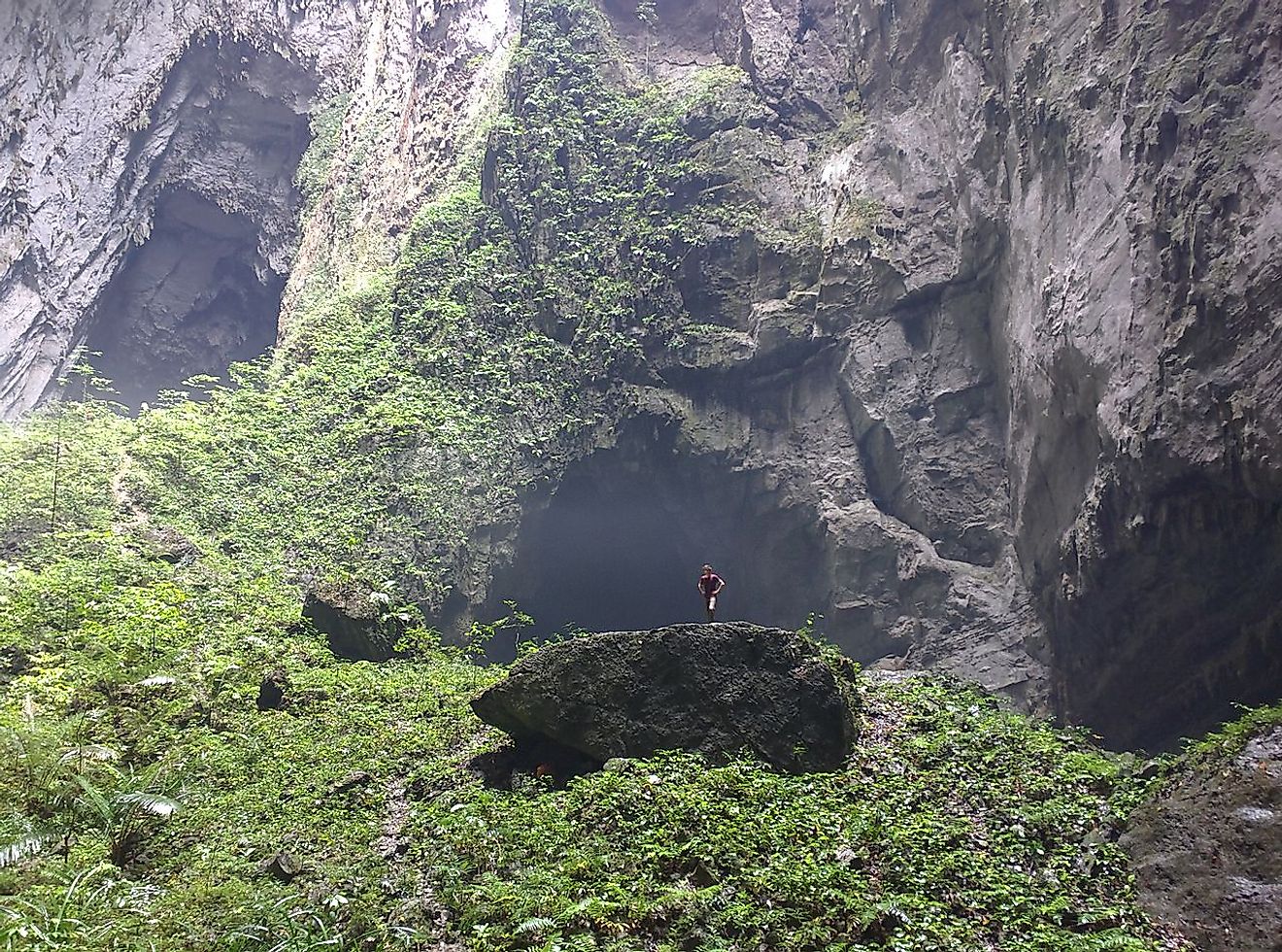Han Son Doong, Vietnam - Unique Places around the World

5. Description
Han Son Doong is the world's largest cave, and it is located in the Quang Binh province within the Phong Nha-Ke Bang National Park and was not discovered till 1991. The cave is about 4 miles (6.5 kilometers) long and over 656 feet (200 meters) high, with mist surrounding the deceptively small entrance. The mist forms because of the temperature difference between the outdoors and the cool air within the cave. Massive stalactites hang from the top of the cave and jungle plants grow in many areas. The cave even has its own river, providing a versatile ecosystem for all of the living creatures within.
4. Tourism
Visitors are not allowed to enter the cave without a guide because the terrain can be dangerous due to steep descents, but hiring a guide is well worth the $3000 dollar cost. Most trips into the cave last about 5-7 days and are quite intensive. Since the cave is located within a national park, it requires a day and a half of hiking and then there is a 260 foot drop before reaching the entrance. Even though it is a labor-intensive expedition, with most trips including about 31 miles (50 km) of hiking, it is also an unforgettable experience. An important thing for visitors planning to embark on this journey to remember is to buy all of the necessary equipment for the trip, such as good hiking boots, and to be physically prepared. The tourist season lasts from about February to August, as in August heavy rains cause the river levels to rise making the cave inaccessible.
3. Uniqueness
Han Son Doong is not only unique because of its size; the remarkable habitat and rock formations within the cave are one of a kind as well. The area with the most vegetation and life has been named the "Garden of Edam," after the biblical Garden of Eden. Apart from the plants growing there, an interesting feature of the cave are the "cave pearls" which are circular stones embedded in dried out terrace pools formed by calcite crystals. Han Son Doong is really a network of about 150 individual caves so the variety of habitats and terrain is also noteworthy and unique compared to other cave systems.
2. Habitat
Unlike most caves, Han Son Doong has natural light from a ceiling that collapsed hundreds of years ago and a river running through it so the cave has its own ecosystem. Ferns and jungle plants grow inside and people have seen animals such as monkeys, birds, and snakes. Other creatures that inhabit the cave are hornbills, flying foxes, and swifts. Immense trees grow in the areas where there is sunlight to provide a perfect environment for them. In the areas without light, albino species can be found which have adapted to living in the total darkness.
1. Threats
A major threat to the cave is that the government plans to commercialize it by installing transportation systems like cable cars. This would take away from the natural beauty and wonder of the cave. The logic behind the cable cars is to make it easier for tourists to explore the cave, but this modernization may ruin much of its allure because, the cave has not yet been tampered with by man. The system is designed to be able to carry 1,000 visitors to Son Doong in an hour. Mass tourism may also hurt the ecosystem, as the environment is not accustomed to getting large groups of visitors. The best way to preserve the cave may be to not tamper with it through human innovation.











